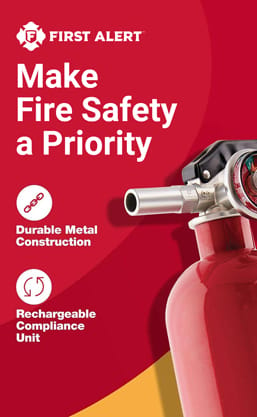Temperature Alarm Systems (3 items found)
Showing 3 of 3
Keep tabs on temperature changes at home, the cabin or the garage with temperature alarm systems that send alerts when readings go above or below your preferred range. From freeze alarms that help protect pipes to smart temperature monitors you can check from your phone, find options that fit your space and routine.
Understanding Temperature Monitoring Technology
Modern temperature monitoring devices utilize advanced sensors and digital displays to provide accurate readings around the clock. A quality temperature indicator tracks ambient conditions and triggers audible or visual alarms when temperatures exceed preset safety thresholds. Professional-grade systems offer wireless connectivity, allowing remote monitoring through smartphone apps or computer interfaces. Battery backup systems ensure continuous operation during power outages when protection matters most.
Essential Applications for Home Temperature Monitors
Home temperature monitors protect vulnerable areas prone to freeze damage or equipment overheating. Basements, crawl spaces, attics and unheated rooms require constant temperature surveillance to prevent pipe bursts and structural damage. Greenhouse owners rely on temperature monitoring systems to maintain optimal growing conditions for sensitive plants and crops. There are a number of locations where keeping the temperature safe and stable is required:
- Server rooms and computer equipment areas
- Wine cellars and temperature-sensitive storage
- Vacation homes and seasonal properties
- Pharmaceutical storage facilities
- Pet care facilities and animal shelters
Types of Temperature Alarms and Thermostats
Here’s a quick overview of common temperature alarm types and how they’re used.
- Wi‑Fi/app-enabled monitors: Connect to your home network for mobile alerts, threshold settings and data logs you can review over time.
- Cellular-enabled options: Use a cellular connection for locations without reliable Wi‑Fi, such as outbuildings or vacation homes.
- Standalone audible alarms: Sound a local alert when temperatures hit a set point—simple, no-app options for on-site awareness.
- Multi-sensor models: Combine temperature with humidity, freeze or water leak detection for broader monitoring in basements, utility rooms and crawlspaces.
Shop these options and more in our complete thermostat and temperature alarm system selection within our broader heating and cooling category.
What Temperature Should You Set a Freeze Alarm To?
Many homeowners set freeze alarms between 40°F and 45°F to provide a buffer before temperatures approach freezing. Choose a threshold that fits your space, insulation and plumbing, and adjust seasonally as needed.
Do Temperature Alarms Also Monitor Humidity?
Some models include a combined temperature and humidity sensor so you can track both conditions and set separate thresholds. If moisture control is important in your space, look for a temperature and humidity monitor or a multi-sensor device.
Where Should You Place a Temperature Sensor?
Install sensors where temperature changes matter most and where readings won’t be distorted by direct sun or vents, such as near plumbing runs in basements, by mechanical equipment or in areas prone to heat loss. Follow the manufacturer’s placement guidance for best results.
Shop Temperature Monitors Near You at Ace
Protect your home with temperature alarm systems near you from Ace Hardware. Visit your neighborhood location where our knowledgeable staff can help you select the reliable temperature monitors and alarms for your specific needs. You can also find a selection of thermostats and heating supplies to complement your new temperature system, as well as heaters, fireplaces and more heating options.

























